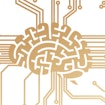
One of the challenges in assessing rodent models of autism/intellectual disability is linking specific genetic alterations to changes in neural function and behavior. Paul Dudchenko plans to address this challenge by using the head direction cell system — comprised of neurons that encode direction — to characterize rigid and flexible neural coding in Fmr1, Grin2b and Syngap1 knockout rats. This characterization will provide rich data on both the neural systems and the behavioral capacities of these three rodent models.